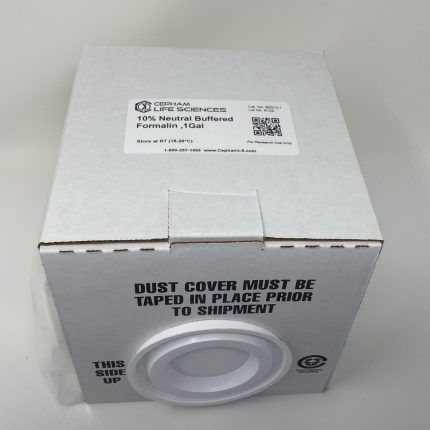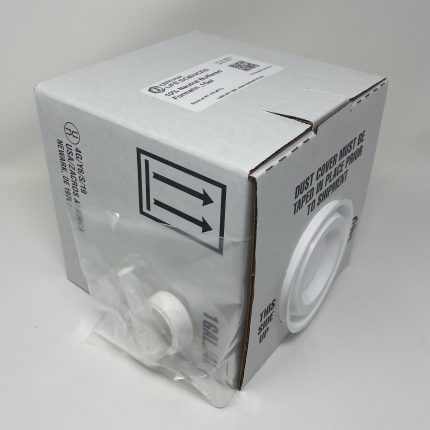Hydrogen peroxide (H2O2), commonly used as a bleaching agent, is a clear, colorless liquid that readily mixes with water. It has a slightly sharp, pungent, irritating odor and a bitter taste. In its stabilized form, hydrogen peroxide appears as a crystalline solid at low temperatures. Its vapors are irritating to the eyes and mucous membranes. The chemical, especially at higher concentrations, can violently decompose upon contact with the most common metals and their compounds.
Hydrogen peroxide, a standard blocking agent in immunohistochemical procedures, is a reactive oxygen species formed as a reaction product of various aerobic metabolic processes. It is routinely used to block endogenous peroxidase activity in the study samples. Use of HRP-conjugated antibodies with certain cells and tissues containing endogenous peroxidases may result in high, non-specific background staining. This non-specific background can be significantly mitigated by pre-treatment of the samples with hydrogen peroxide prior to the process of incubation with HRP-conjugated antibody. Pre-treatment with saturating amounts of hydrogen peroxide results in the irreversible inactivation of endogenous peroxidase in sample cell preparations and frozen/paraffin embedded tissue sections. While 3% hydrogen peroxide is commonly used to block endogenous peroxidase activity, however, certain cells/antigens/tissues can be destroyed upon exposure to high concentrations of hydrogen peroxide. Therefore, in such cases, a lower concentration of 0.3% is recommended.
Hydrogen peroxide mediated blocking can be performed:
• post rehydration and prior to antigen retrieval
• post antigen retrieval and prior to primary antibody incubation
• following primary antibody incubation
• following biotinylated secondary antibody incubation
Synonyms: Perhydrol, Oxydol, Superoxol, Hydroperoxide
Form: Colorless liquid
CAS No.: 7722-84-1
Molecular Weight: 34.015 g/mol
Molecular Formula: H2O2
InChI Key: MHAJPDPJQMAIIY-UHFFFAOYSA-N









